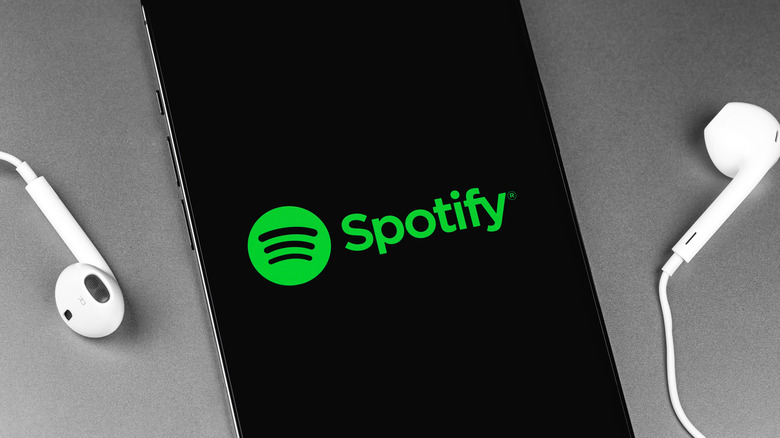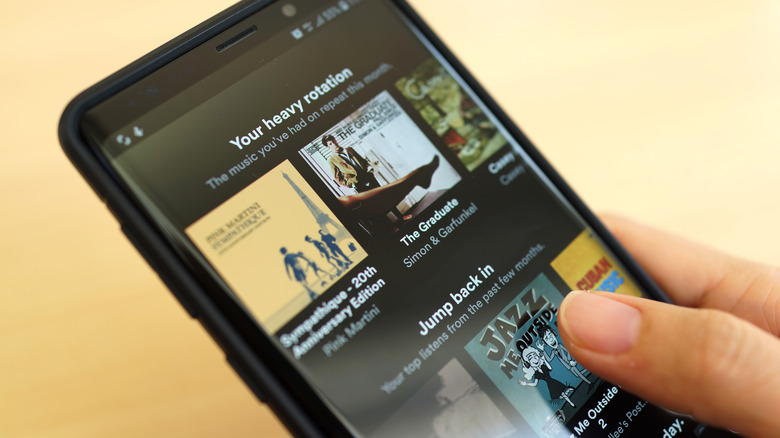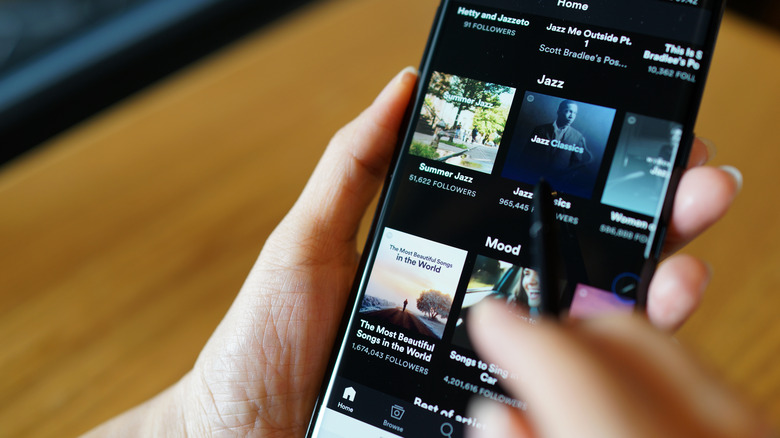This Is How Much Spotify Pays Artists On The App
In 2008, Swedish entrepreneurs Daniel Ek and Martin Lorentzon founded the music streaming service Spotify to combat piracy. "The only way to solve the problem was to create a service that was better than piracy and at the same time compensates the music industry," Ek told The Telegraph (via BBC). While the likes of Pandora, SoundCloud, and Bandcamp existed before Spotify came on the scene, the latter transformed the industry altogether.
Before streaming became the primary way to listen to music (per CBS News), people would either buy music online from places like the iTunes Store or transfer music from CDs and MP3s to a music library platform. But thanks to Spotify's library of over 70 million songs, according to CNET, listening to music is as simple as just opening the app. If you're wondering how Spotify has access to such a vast library, it's all down to licensing deals with record companies that provide the streaming service with major and independent artists.
But just how much are artists paid for featuring their music on the app?
Musicians aren't paid as much as you think on Spotify
According to music distributor Ditto, Spotify will pay artists between $0.003 to $0.005 per stream in 2022, with 70% going to the artist and 30% going to Spotify. Using Ditto's Spotify royalty calculator, 100 streams of a song would earn you an estimated $0.44 in royalties. In comparison, 1 billion streams of a track would result in $4,370,000 in earnings.
In 2019, Audio Oxide reported that Spotify paid artists an estimated $0.00038 per play. So if an artist were to get a billion plays in this timeframe, they would have earned around $380,000 in royalties, which isn't exactly the best pay rate — especially for independent artists. However, as independent singer-songwriter Vérité told Forbes, Spotify "provides a platform for discovery" that will "link your listeners to your merchandise and concerts, and will provide back-end data for you to locate and analyze your followers."
As Zach Bellas, a professional musician and founder of SMB records told Business Insider that musicians "have always made the bulk of their money from live performances and touring." Although, some artists earn the bulk of their royalties at specific times of the year, like Mariah Carey during the Christmas season.
Spotify has been in controversy regarding the number of royalties it pays
For major artists like Taylor Swift, the amount earned through royalties on Spotify wasn't enough. So much so that she removed her entire discography from the streaming platform in 2014. "It's my opinion that music should not be free, and my prediction is that individual artists and their labels will someday decide what an album's price point is," she wrote in the Wall Street Journal at the time (via The Guardian). Swift would return to the platform three years later, but she made it clear that major artists can have a significant effect on the app, like when Adele changed the way we listen to music on Spotify by removing the shuffle feature on her album "30."
In October 2020, the United Musicians and Allied Workers Union (UMAW) launched their Justice at Spotify campaign (via DJ Mag). They said the streaming giant "continues to accrue value, yet music workers everywhere see little more than pennies in compensation for the work they make."
This is set to change, as a ruling by the Copyright Royalty Board in the United States proposed "an increase of more than 30 percent in mechanical royalties for songwriters and streams in their compositions," per the Financial Times, which is set to begin in 2023. This is despite Spotify, Google, Pandora, and Amazon appealing against the decision (via Variety).



